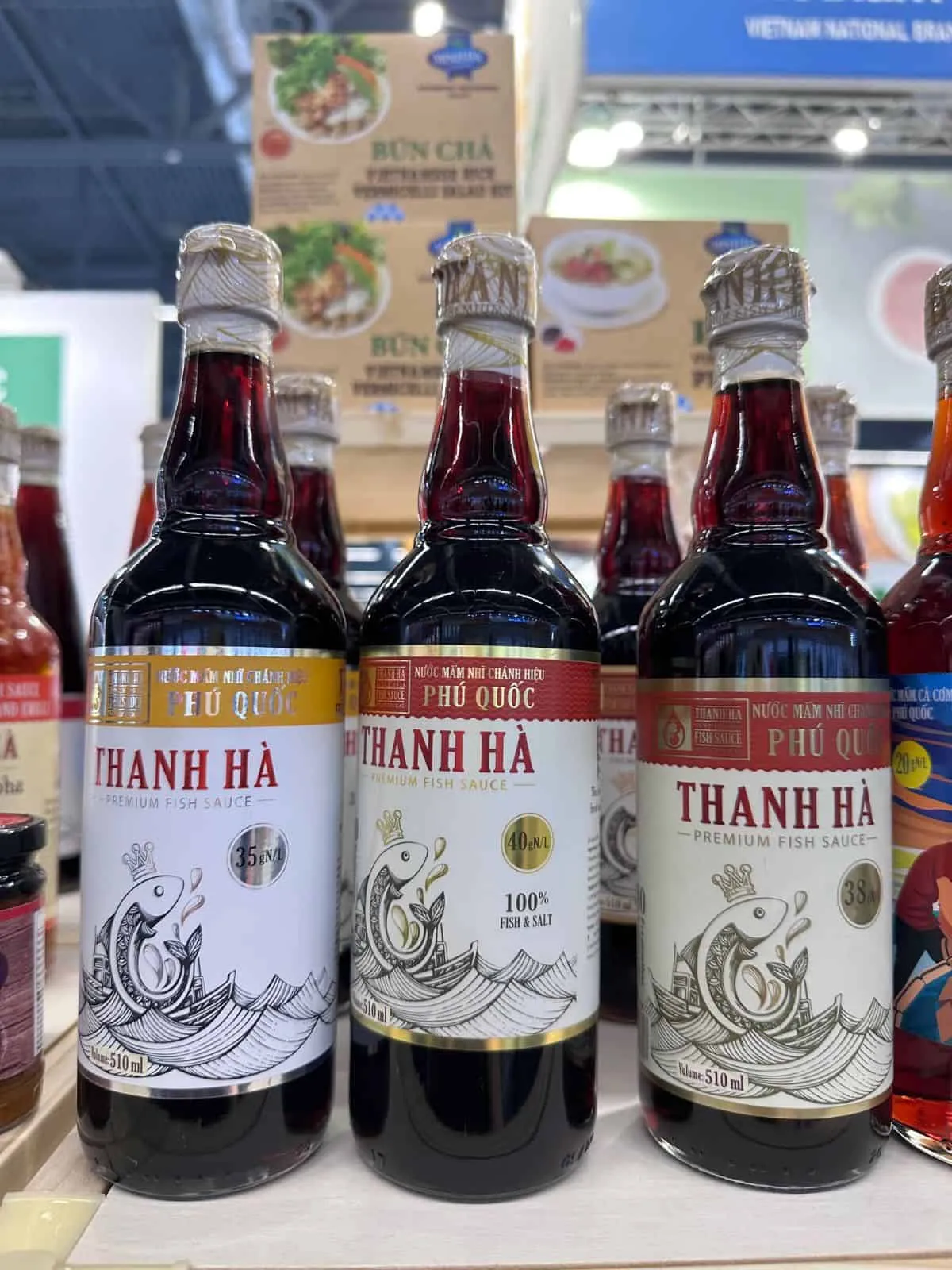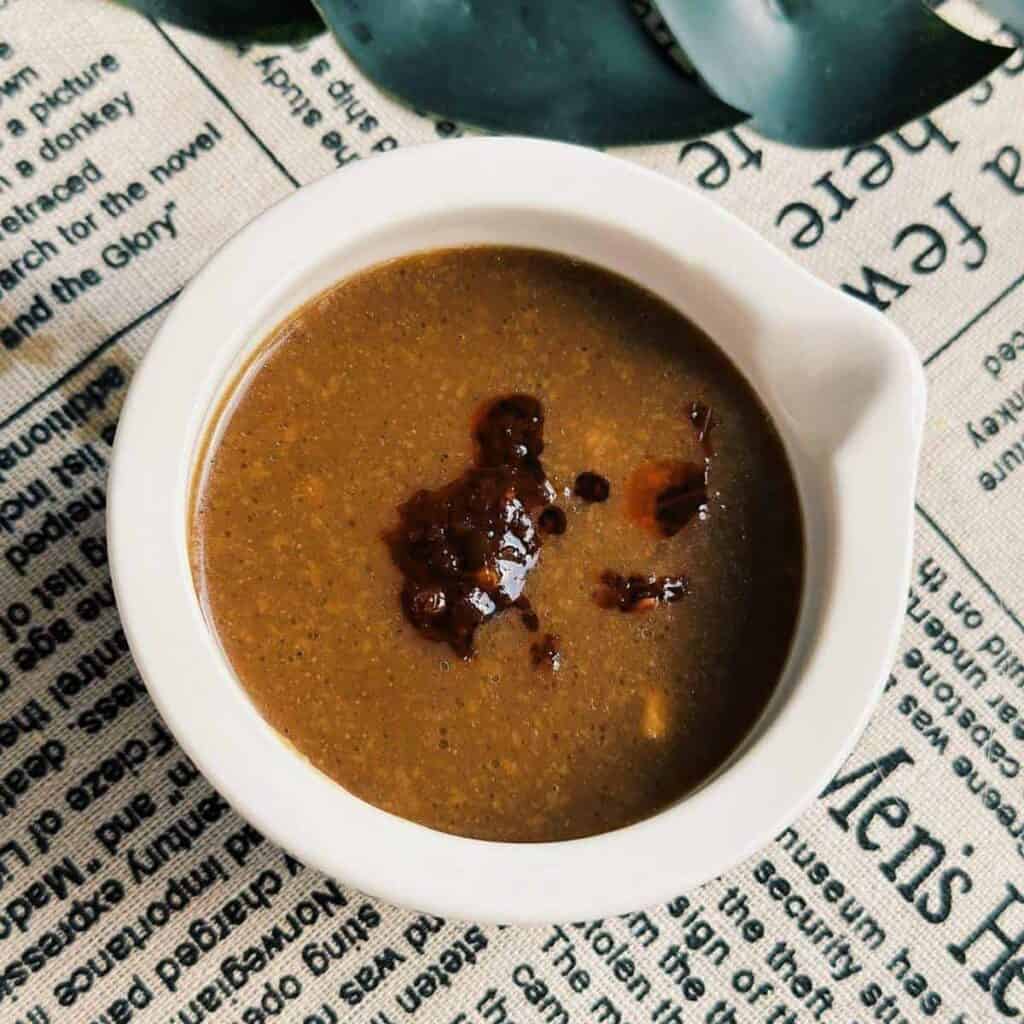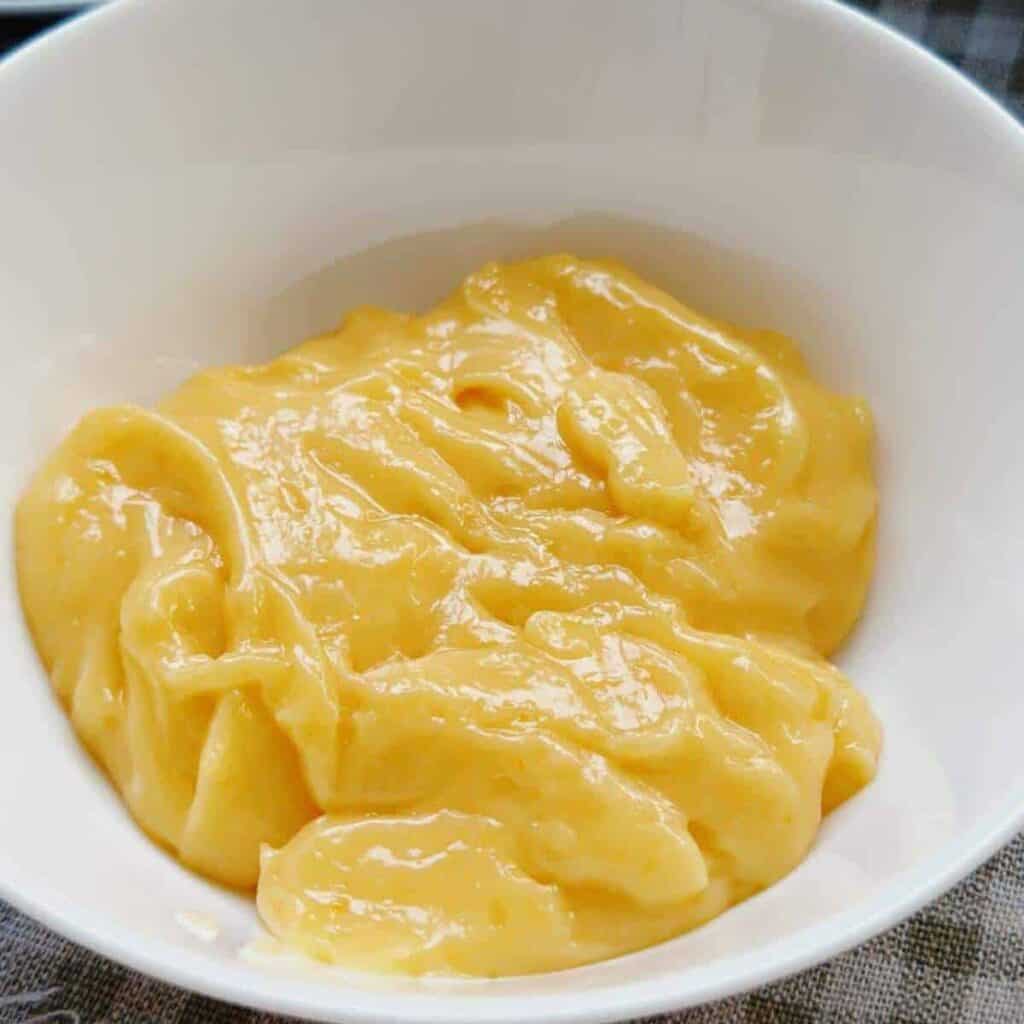Nước Mắm – fish sauce – is the heartbeat of Vietnamese cooking. We season, marinate, and make countless dips with it.
Yet many casually call it “Nước Chấm.” Not entirely wrong, but not quite right either. So let’s clear up this mix-up once and for all!

What’s Inside
What exactly is “Mắm”?
Before diving into Nước Mắm (fish sauce), let’s take a step back to see the bigger picture — Mắm. In Vietnam, this word is an umbrella for all kinds of fermented ocean treasures: fish, shrimp, squid, even clams.

Fermentation isn’t something new in Asian kitchens. Think soy sauce, kimchi, miso, gochujang, tempeh, or kombucha — all born from that same slow, magical, time-honored process.
Across Southeast Asia, you’ll find countless variations of fermented seafood sauces and pastes — Thai pla ra, Lao padaek, Khmer prahok, Filipino bagoong, and of course, Vietnamese mắm.

Credit:Tuoitre
And within Vietnam alone, the world of mắm is wonderfully rich and diverse:
Nước Mắm – The golden liquid essence of anchovies (or other small fish) fermented with salt. In Vietnamese, “nước” means water.
Mắm Tôm – A Northern favorite. This fermented shrimp paste is bold, pungent, and deeply savory — the soul of Bún Riêu, Canh Bun, Chả Cá Lã Vọng, and the iconic Bun Dau Mam Tom.
Mắm Ruốc – The Southern and Central cousin of shrimp paste, essential for the legendary Bun Bo Hue.
Mắm Nêm (Mắm Cái) – A robust fermented anchovy sauce that includes both fish and liquid. It shines as a dipping sauce, especially with Goi Cuon (fresh rice paper rolls) or Thịt Luộc (boiled pork belly).
Mắm Bò Hóc – Vietnam’s take on Khmer prahok, loved in An Giang province near the Cambodian border. Made from freshwater fish like snakehead (cá lóc), it flavors rich, hearty dishes like Bun Mam, Lẩu Mắm, or Mam Chung.
Let’s Talk About Nước Mắm
When it comes to cooking Vietnamese food, fish sauce is usually the first thing that pops into people’s minds. Sure, it’s a bit pungent — but believe me, it’s still gentle compared to some of our stronger, funkier fermented sauces.
So, what makes Nước Mắm so special? It’s that deep, savory umami — the kind that lingers on your tongue and somehow brings every element of a dish together.

For truly authentic Vietnamese cooking, I always recommend using fish sauce made in Vietnam. We love one that’s not overly fishy — just clean, amber-golden, and beautifully balanced in flavor.
With our long coastline, making fish sauce has become an art form, passed down through generations.
You’ll find craft villages from North to South perfecting their own styles. While Phú Quốc is world-famous, other regions like Cát Hải (Hải Phòng), Nam Ô (Đà Nẵng), Nha Trang (Khánh Hòa, my hometown!), and Phan Thiết (Bình Thuận) all produce incredible bottles too.

If you ever visit Vietnam, bring home a bottle of Nước Mắm — it’s a one-of-a-kind souvenir that truly captures our flavor.
And while you’re at it, don’t miss out on our Vietnamese coffee, pepper, or artisan Vietnamese chocolate made from locally grown cacao.
How to Use Fish Sauce in Vietnamese Cooking
Choosing the Right Fish Sauce
Let’s start with the basics — picking the right Nước Mắm.
Back home in Vietnam, my mom always keeps two kinds in her kitchen: the precious first-press fish sauce (nước mắm nhĩ) and a lighter, everyday one.
- The first press is like liquid gold — rich, aromatic, and a little pricey. We save it for dipping sauces (nước chấm) or for seasoning dishes right before serving, so that its deep umami flavor really shines through.
- The lighter version, on the other hand, is perfect for daily cooking — marinating meat, seasoning soups, or adding that savory depth to a quick stir-fry.

What Is First-Pressed Fish Sauce?
“First press” refers to the very first extraction from the fermented fish barrels — the purest, most flavorful liquid that captures the essence of the fish. Think of it as the fish sauce equivalent of extra virgin olive oil.
When buying fish sauce, take a quick look at the nitrogen level (N) on the label — it’s the key indicator of quality. Premium sauces usually start above 30N, while the finest ones can reach 40N. Everyday varieties often sit in the mid-20s, and they’re perfectly good for daily cooking.
How to Use Fish Sauce
A. The All-Purpose Seasoning
In Vietnamese cooking, fish sauce isn’t just a condiment — it’s the foundation of flavor. We use it the way others use soy sauce or salt, but it brings something extra: that deep, savory umami that ties every dish together.
From soups to stir-fries, a splash of Nước Mắm can transform the simplest ingredients into something rich and comforting.
For cooking, lighter fish sauces are ideal — they blend seamlessly into broths, marinades, and sauces without overpowering the dish. Save the rich, first-pressed varieties for finishing touches or dipping.
Some classic Vietnamese dishes where fish sauce shines:
Grilled dishes: Bun Cha, Cơm Tấm, Thit Nuong, Lemongrass Pork Chops, Vietnamese Lemongrass Chicken, or even Air Fryer Fish Sauce Wings.
Soups & stews: Bò Kho (Beef Stew), Ca Ri Ga (Chicken Curry), Canh Chua (Sweet & Sour Soup).
Noodle soups: Phở Bò (Beef Phở), Phở Gà (Chicken Phở).
Braised dishes: Suon Ram Man (Caramelized Pork Ribs), Ga Kho Gung (Caramelized Ginger Chicken), Thit Kho Trung (Braised Pork & Eggs).
Stir-fries: Ga Xao Sa Ot (Spicy Lemongrass Chicken), Bò Lúc Lắc (Shaking Beef), Rau Muống Xào Tỏi (Water Spinach with Garlic).
B. The Soul of Vietnamese Dipping Sauces
Fish sauce doesn’t just season — it connects. It’s the soul of Nước Chấm, Vietnam’s iconic sweet-sour-garlic-chili dipping sauce that brings every meal to life.
The classic formula is simple: fish sauce + lime or vinegar + sugar + garlic + chili.

But Nước Chấm isn’t one single sauce. In Vietnamese, the name literally means “dipping sauce,” so if you ask for it in Vietnam, locals might respond with, “Which one?”
What people abroad often call Nuoc Cham is, in Vietnam, more specifically known as:
- Nước Mắm Pha – blended fish sauce
- Nước Mắm Chua Ngọt – sweet and sour fish sauce
- Nước Mắm Chấm – fish sauce for dipping
- Nước Mắm Tỏi Ớt – garlic-chili fish sauce
Nước Chấm can be used in many ways:
As a dipping sauce for Banh Xeo (Sizzling Pancakes), Banh Cuon (Steamed Rice Rolls), Cha Gio (Egg Rolls), Chicken Spring Rolls…
As a salad dressing for noodle bowls like Bun Ga Nuong, Bun Bo Xao, Bun Thit Nuong or Bun Cha Gio.
Nước Mắm vs. Nước Chấm: Wrapping It Up
To put it simply, Nước Mắm is pure fish sauce — that golden, savory essence straight from fermented fish and salt.
Once we blend it with sugar, lime or vinegar, garlic, and chili, it becomes Nước Mắm Pha or Nước Mắm Tỏi Ớt — more specific and flavorful versions of the sauce. These are what many people abroad refer to as Nước Chấm, though that’s actually a broader term.
In Vietnamese, Nước Chấm simply means “dipping sauce.” It can be made from fish sauce, soy sauce, shrimp paste, or even something completely different.
So next time you enjoy a Vietnamese dip, you’ll know exactly what’s in your bowl — and what to call it!
Related Recipes | Explore more “Nước Chấm” (Vietnamese dipping sauce) variations:

(Tương Chấm Gỏi Cuốn)

(Nước Mắm Gừng)

(Muối Ớt Xanh)

(Sốt Bơ Trứng)
You can discover a compilation of Vietnamese recipes on my blog and subscribe for new updates.
And don’t forget to stay in touch with me on Instagram, Facebook, Pinterest, and YouTube 🥰.
